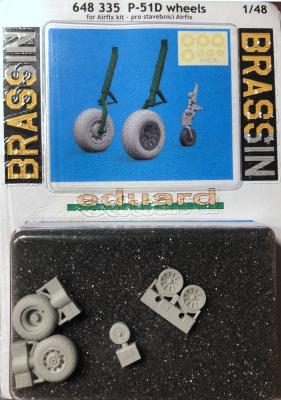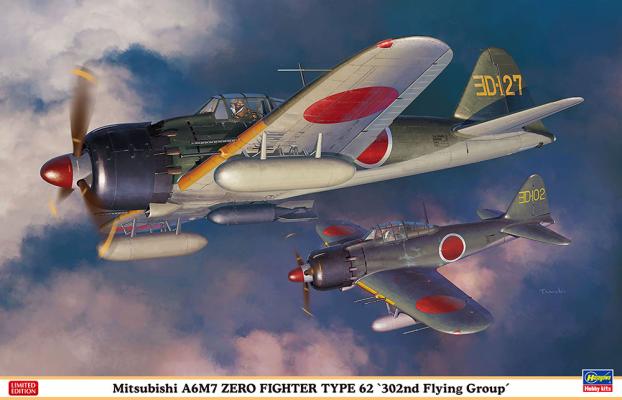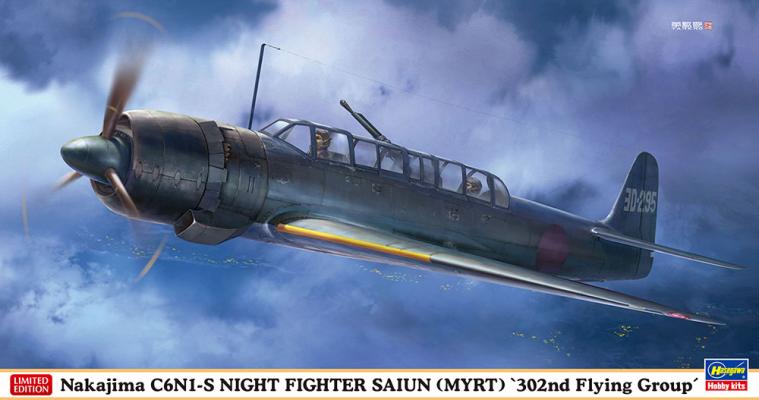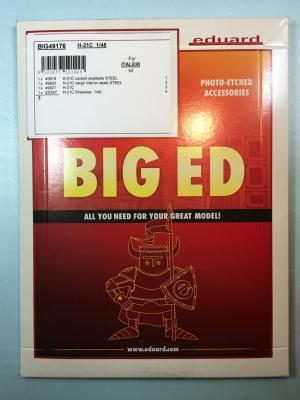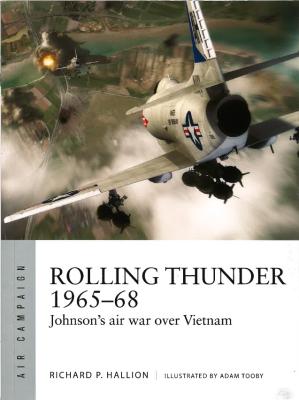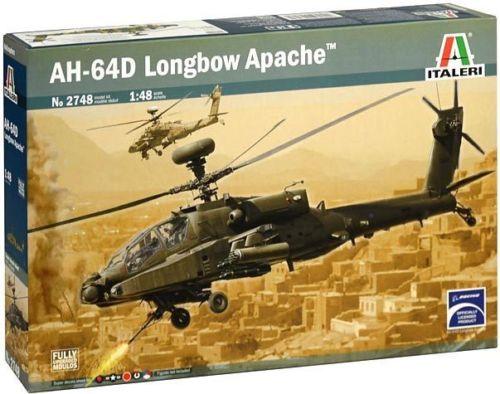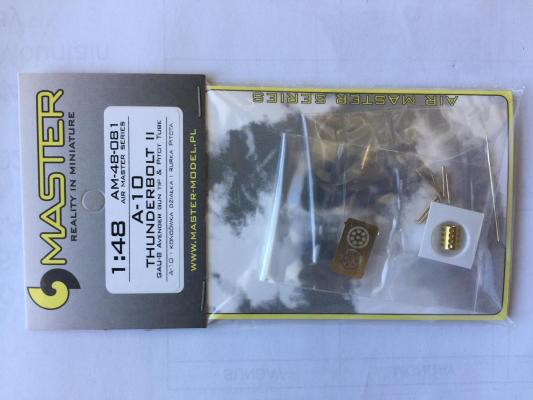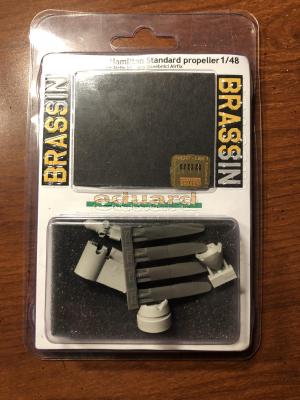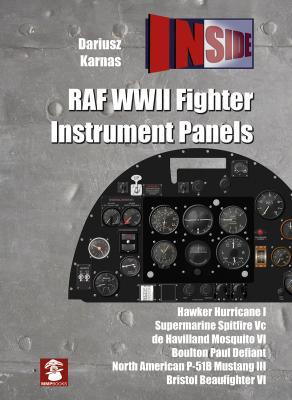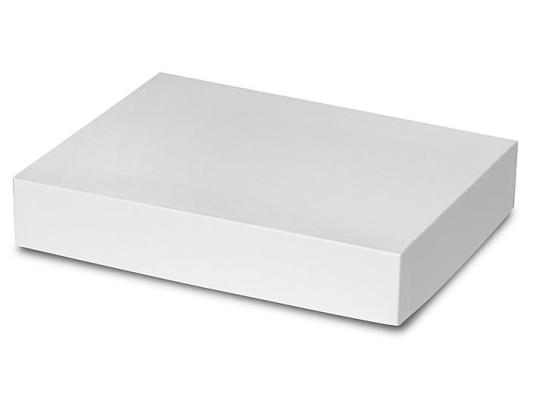Recently I was given the opportunity by IPMS USA to review Eduard’s BRASSIN wheels for the new 1/48 Airfix P-51D kit. One of the first things to notice with this product is the excellent presentation of the packaging with the familiar clamshell box, with the resin parts safely cocooned on dark grey foam inserts, and the instructions sandwiched between the two halves, doubling as the header card. This set gives new main wheels and the tail wheel. The main wheels have the diamond tread pattern and come with separate hubs. The tail wheel is one part and comes with a new leg which is made from a different type of resin which is probably less prone to sagging. As well as the wheels a set of yellow tape masks are also supplied.
The Mitsubishi ‘Zero’ fighter was Japan’s premiere fighter at the beginning of World War II. By the time the A6M7 Type 62 appeared, the airplane had been outclassed by American fighters and in the waning months of the war, they were used in Kamikaze attacks primarily against U.S. Navy ships.
Hasegawa has done an excellent job of reproducing this aircraft. There are plenty of details provided, and nice touches such as the tape over the rivets on the fabric flight controls are there. The kit comes with a total of 147 pieces molded in a light grey and clear plastic. The fit of the parts is excellent, and I needed just a minimum of filler putty on several joints.
Hasegawa has released this aircraft with components to make two Prototypes of the original developed reconnaissance aircraft modified for night fighter duty. One version with twin 20mm cannons and one with a single 30mm Cannon. There was only one of each built in June 1945 and both were used. There was no record of these being successful in service.
In the box is:
- 6 x light grey sprues
- 1 clear sprue
- 1 decal sheet
- 1 poly caps
- Bag of metal parts (20mm Cannons)
- 1 instruction booklet
While you get lots of sprues, you also get plenty of unused parts.
All the sprues are extremely well molded with very little flash and great detail; the decals allow you to finish the aircraft as the two variants different versions.
My father, a retired career pilot and Colonel in the USAF, passes along a magazine he receives each month as a member of the Air Force Association. Several years ago, an article in one issue titled “Life on the Pine Tree Line” captivated me. The article details daily activities at a remote DEW-line radar site on Resolution Island, in far North Newfoundland, back in the 50s and 60s. In particular, photos of an H-21 Shawnee or “Flying Banana” as it is more commonly referred to in Artic Red conspicuity markings, caught my eye. Other aircraft and vehicles documented in the photos included a C-123, a TWA “Connie”, various cargo trucks and vehicles, and a small WWII utility vehicle known as a “Weasel”. Visions of a winter diorama scene began to take shape.
Richard Paul Hallion was born in Washington, D.C., on May 17, 1948. He graduated from the University of Maryland in 1970 with a B.A. and followed up with his Ph.D. in 1975, again from the University of Maryland. He was a curator of science and technology at the Smithsonian from 1974 to 1980. He has worked with the Air Force Flight Test (Edwards AFB), the Aeronautical Systems Division (Wright-Patterson AFB), the Army War College, and many other aeronautical institutions. He is a Fellow of the American Institute of Aeronautics and Astronautics, the Royal Aeronautical Society, and the Royal Historical Society, and an Honorary Member of the Order of Daedalians who has flown as a mission observer in a wide range of military aircraft, including the Vietnam-era AH-1, Canberra, C-1, C-130, C-141, C-5, F-104, F-105, F-4, F-111, O-2, P-3, CH-46, SH-3, and UH-1.
The Boeing AH-64-D Longbow is a twin-turbo shaft attack helicopter with a nose mounted target acquisition and night vision systems which makes it incredibly destructive. Longbow-equipped Apaches can locate up to 256 targets simultaneously within 50 km; the fire control radar is able to crush the enemy beyond sight range.
Upon opening the box, I found there to be 4 sprue's - 3 grey and 1 clear. Also included were the instructions for five different markings and stencils plus a decal sheet. The first thing I always do is to remove the clear sprue and pour future over them. This will stop a lot of problems later. Inspecting the rest of the grey sprue's I found no sink holes on the outside of the parts, but there were a few on the inside that were not going to be seen at final display.
History
Developed in parallel with the AX program which eventually led to the A-10 Thunderbolt II the General Electric GAU-8 "Avenger" was designed as a tank killer. The seven-barrel 30 mm cannon can fire over 3000 rounds a minute. When coupled with depleted uranium cored ammunition this weapon can penetrate most known armor. During my time in the USAF I was posted with the 23rd TAC who flew the shark mouthed A-10s of Flying Tiger fame. Part of my duties required maintenance visits to the firing range where I got to see these weapons awesome power first hand. A number of model companies have produced the A-10 in 1/48 scale and while the airframes are very good in most cases the gun is a solid piece without hollow barrels. Scratch building a GAU-8 is certainly possible but not necessary with this masterpiece of an aftermarket set.
Recently I was given the opportunity by IPMS USA to review Eduard’s BRASSIN Hamilton Standard Propeller for the new 1/48 Airfix P-51D kit. One of the first things to notice with this product is the excellent presentation of the packaging with the familiar clamshell box, with the resin parts safely cocooned on dark grey foam inserts, and the instructions sandwiched between the two halves, doubling as the header card.
The set contains:
- Grey resin components (7 pieces)
- Etched brass part (1plus spares)
- A resin assembly jig
Upon removal of the components from the package you will notice the great level of detail with the inside of both the spinner front and back-plate boasting some great touches. The blades are great and the shape on these are perfect. The set also comes with a jig to help with location of the blades and is also nice to help hold the assembly if you want to drill a hole in the center for the prop to spin,
The book is a part of MMP books “Inside” series and is an illustrated guide to some of the RAF WWII most famous fighters.
The book contains so fantastic illustrations which give any modeler a great reference guide for completing cockpit instruments.
This book is a very good reference guide and idea for all modelers.
I recommend this book to everyone with an interest in the aircraft and modeling them.
Thanks go to Mushroom Model Publishing for providing this book to review and IPMS USA for allowing me to review it for them
The new Zvezda kit picks up where the excellent Bf-109F kit leaves off. The new kit shares many of the same sprues and because of this it has some similar issues. Notably the kit needs some help in a few areas, namely the ailerons, exhausts and wheel wells. Well Vector has stepped up to the plate and provided some exquisite resin corrections.
Packaged in a small ziplock bag with a paper label at the top, Vector provides you with some beautifully cast light grey resin that is blemish free. You get two new wheel wells, two ailerons, exhausts, cockpit shelf and bulged battery box.
The kit ailerons feature some exquisite fabric representation on the top side, but only on the top side. The bottom is missing the fabric detail. Not a horrible thing but a noticeable oversight. It is a shame that Zvezda didn’t take the time to correct this but Vector provides you with two new ailerons with beautiful detail on both sides.

